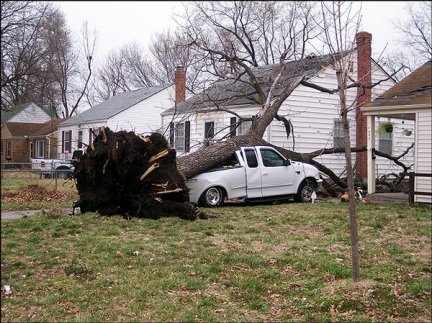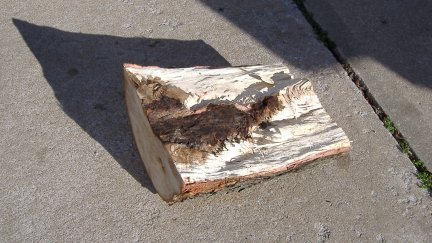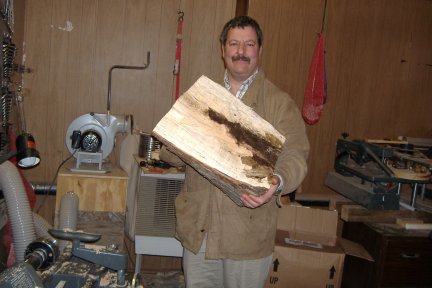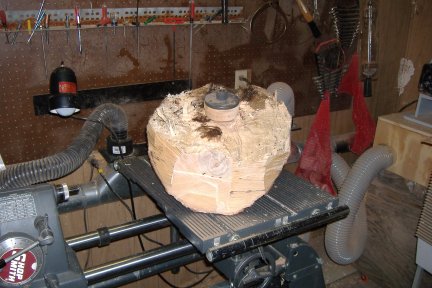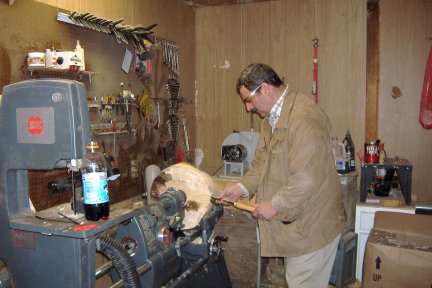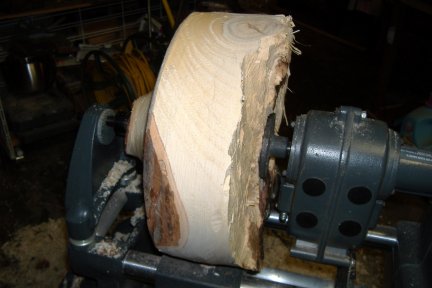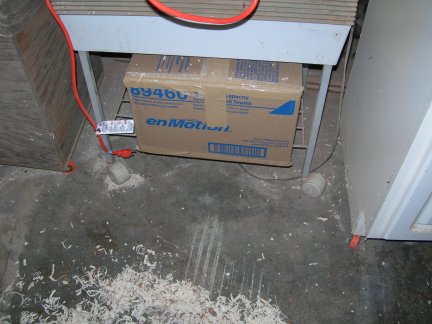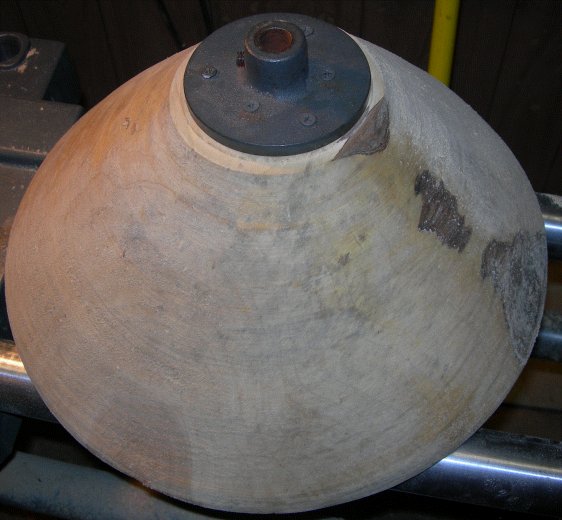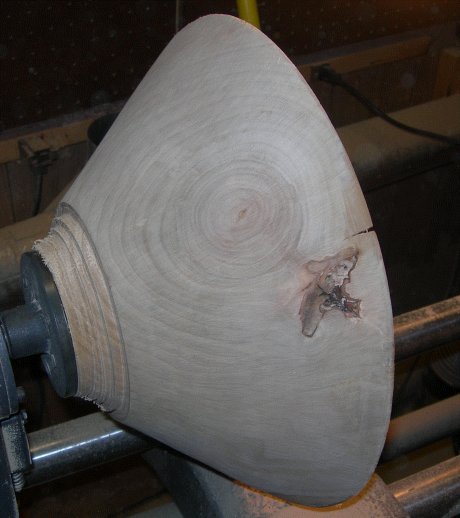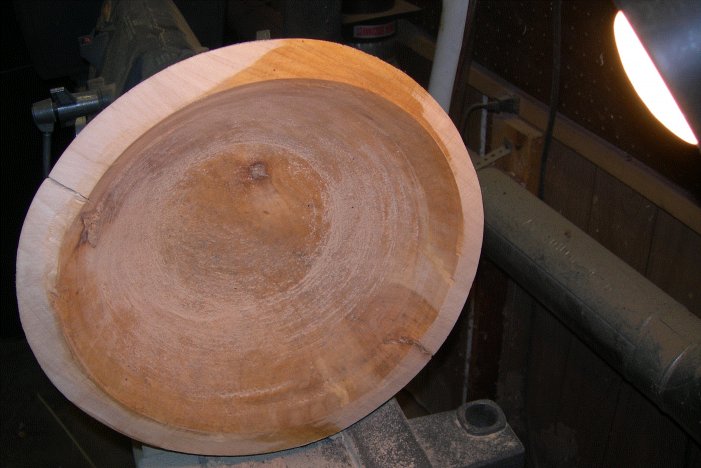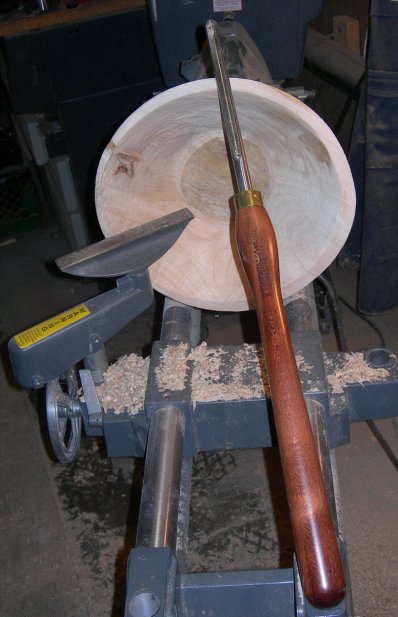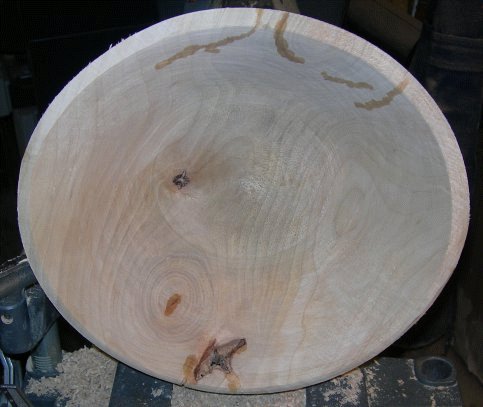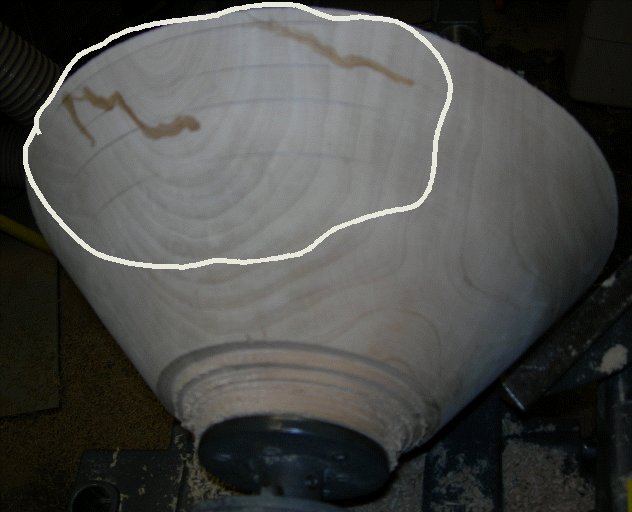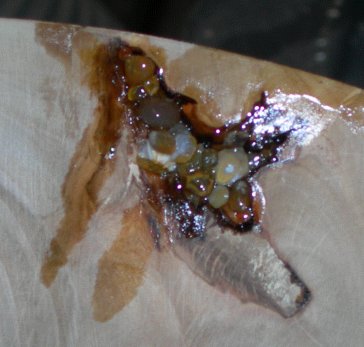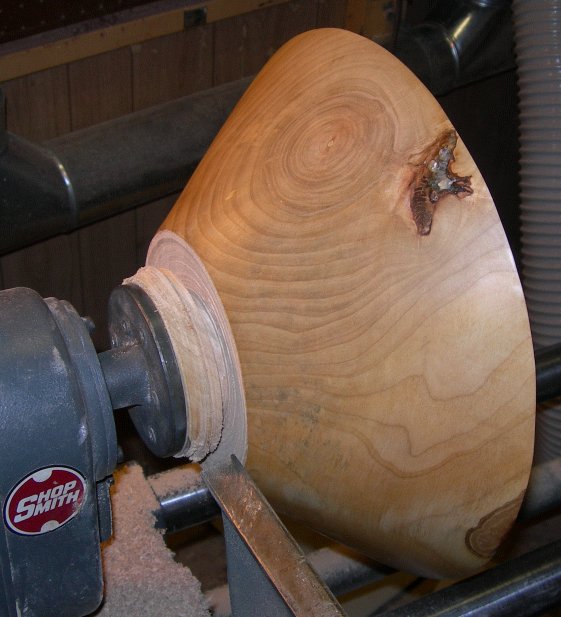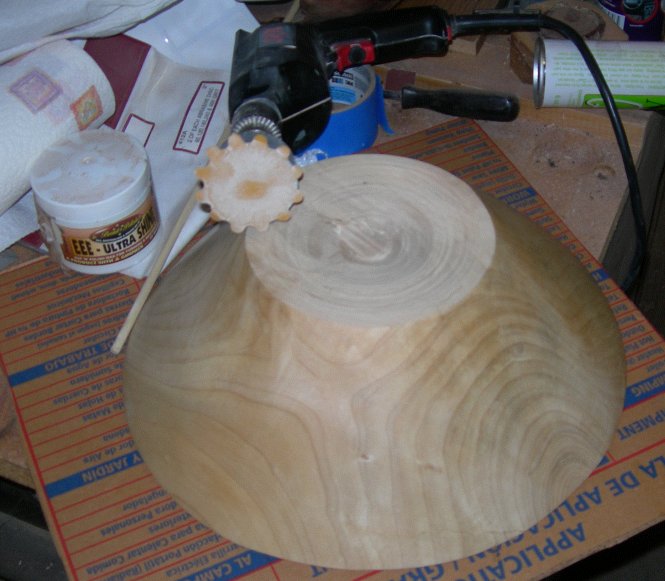
It's August 2006 and the temperature is finally below 80 degrees and bearable in the garage.
A good time to have a look at the dried bowl in the box.
It has warped a bit and there is a little cracking but it looks pretty good.
I wonder if the tung oil thing helped with warpage. Certainly didn't hurt.
I did the same to a couple sweet gum bowls that are also in storage so we'll see.

Looking at it form the side, it appears there was some pretty good warping going on.
I've noticed that if you include heart wood it ends up looking something like this.

I think the first thing I am going to do is to remove the tenon and mount this directly to a faceplate.
I only have 2" jaws and I think it would be a recipe for disaster.
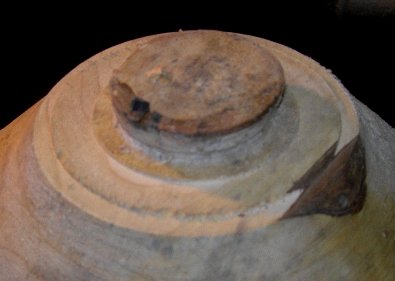
I stuck the bowl on the lathe using the jaws long enough to use the parting tool to cut in
a round circle so that when I mount the faceplate, it will be close to center.
